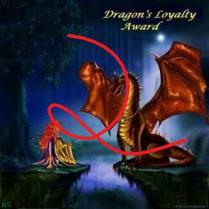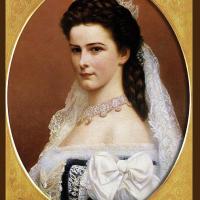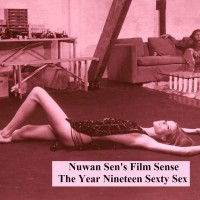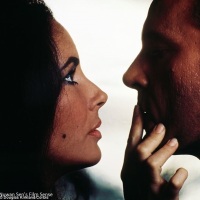Like I did, back in Year 2015 & Sweet Year 2016, I decided do a Blog Post on all the films I saw within this Month of May, 2019!!!!!

🎞🎞🎞
Feature Films
The Front Page (1931)
Watched on Sunday Afternoon, 12th May 2019! Downloaded Film!
A Downloaded Movie, downloaded way back in July 2017! Have a load of Downloaded films, from July 2017, am yet to see!
The Front Page (1931) is an interesting satire centered around the Press. Earl Williams (George E. Stone), a Caucasian/white American man and supposed Communist revolutionary, claiming innocence, is convicted of killing an Afro-American cop, and is to be hanged. The court press room, situated right next to the gallows, is waiting to cash in on the latest, and cover the hanging of Earl Williams. Sometimes we see how desensitized reporters can be; for them it’s just the next story. But when the convict escapes, and is found by reporter, Hildy Johnson (Pat O’Brien); who’s about resign, get married and leave for New York, from Chicago; yet keeps getting roped in by his conniving editor, Walter Burns (Adolphe Menjou); and when Hildy Johnson realizes that Earl Williams is innocent; Hildy is hell bent on proving Earl Williams’ innocence. Of course, for Hildy, it still is the latest scoop, but he wants to save an innocent man’s life as well. A hilarious comical take on the world of news-reporters, based on the play, The Front Page, by two ex-Chicago reporters, Ben Hecht and Charles MacArthur, which was 1st staged on Broadway in 1928!
This 1931 pre-Code comedy, is a premake of Howard Hawks’ His Girl Friday (194O), minus the ‘Girl Friday’, as intended in the original Broadway play (a play I haven’t read yet). But His Girl Friday is far more an enjoyable romp than The Front Page. Cary Grant and Rosalind Russell had great chemistry in the 194O classic, as a formally married couple having to work together, and the wife, Hildy (Russell); in lieu of the male Hildy (gender swap) from the original story; constantly getting pulled in by her editor/ex-husband (Grant) and the candlestick phones that keep ringing off the hook, even though she wants to get away and get married to someone else. His Girl Friday is among the greatest comedies ever made. Reporting is in their blood, the love for the job, for both (female) Hildy in His Girl Friday and (male) Hildy in The Front Page. The Front Page‘s Hildy is actually named Hildebrand Johnson, and ‘Hildy’ is short for Hildebrand, an affectionate nickname.
Though The Front Page, directed by Lewis Milestone, is not pure excellence (not just compared to His Girl Friday, but in general); it still comes really close! A Near-Excellent, brisk, fast paced, romp with witty dialogues; that is a must watch; especially for fans of film and literature!!!!! This movie was nominated for a trio of Oscars (‘Best Picture’, ‘Best Director’ & ‘Best Actor’ – for Adolphe Menjou) at the 4th Academy Awards! Lewis Milestone had already won two ‘Best Director’ Oscars. One for Two Arabian Knights (1927), in the ‘Comedy’ category, and the other for one of my favourites films on World War I, a pre-Code anti-war film, All Quiet on the Western Front (1930).
The Front Page is a near-Excellent comedy!!!!
My Rating: 9/10!
ooo
La Chienne (1931)
Watched on Sunday Night, 12th May 2019! On TV5MONDE!
Directed by Jean Renoir, La Chienne (1931) is about a depressed married man who falls for a streetwalker (the title, the English translation of which reads as ‘The Bitch’, is a reference to her character; a character that is both conniving and foolish) and has a clandestine affair with her. Lulu (the streetwalker played by Janie Marèse) however uses the man that loves her, Maurice Legrand (Michel Simon), for the man she is in love with, her pimp, Dédé (Georges Flamant); who in turn uses her using Legrand, for his own personal gain. Legrand’s artworks are sold by Dédé making Dédé rich; and leaving Legrand a penniless vagrant.
A really good socially critical look at human relationships, showcasing how selfishly people use one another for their own benefits! La Chienne might not be an excellent French film by Renoir, yet it’s a very good thought provoking movie, with a brilliant concept. The finalé is both tragic and comic, at the same time. The satirical state of fate of mankind.
Actress, Janie Marèse, who played Lulu, was tragically killed in a car accident, soon after the filming wrapped up. Marèse’s real life lover, and her co-star, Georges Flamant (who debuted as Dédé, in La Chienne) was recklessly driving the car. He survived the accident, but his career was seriously damaged by the press.
La Chienne, released few months after Marèse’s death, was director Jean Renoir 2nd Sound film (as in with synchronized sound)!
My Rating: 8/10!
ooo
Drums Along the Mohawk (1939)
Watched on Monday, 6th May 2019! Downloaded Film!
John Ford’s very 1st movie made in Technicolor, Drums Along the Mohawk (1939) was the 1st movie I watched this month (another Downloaded Movie, from almost two years ago).
Produced by Darryl F. Zanuck, this Historical story, is about a newly married couple who make a new home close proximity to White settlers at Mohawk Valley on the New York frontier and find themselves at the heart of the American Revolution of 1765 – 1783.
The Year is 1776, the newly married couple get roped in by Mohawk Valley’s settlers who’ve formed a local militia in anticipation of an imminent war against them, by Tories (British loyalists) and Tories’ American Indian allies. Soon war ensues, with women and children lending a helping hand. A crucial point of the plot is the Battle of Oriskany, a pivotal engagement of the Saratoga campaign, which was one of the bloodiest battles of the American Revolution. A small group of Brits, travelling south from Canada, invaded the Mohawk Valley as a diversion. Fort Stanwix, that was besieged, is depicted as Fort Schuyler in the film. Fort Stanwix was renamed Fort Schuyler in 1776, only after the battle. Plus, Britishers hand in the war, has been toned down, it’s practically non-existent. Apparently there are lot of minor inaccuracies. Especially, due to the brewing war in Europe at the time, Ford didn’t want to show the British as villains, as the Brits were fighting against German Nazis, the modern day villains, in a modern day war.
Though lacking in historical accuracy, the movie does manage to capture the essence of the American Revolution, through retelling of a small deviation branch of the war. Thus, it’s still a really good movie, led by Henry Fonda and Claudette Colbert. The colourful cinematography is breathtakingly beautiful, and the movie was nominated for two Oscars, including for ‘Best Cinematography’ (in Colour), to Ray Rennahan and Bert Glennon, at the 12th Academy Awards, held in 1940. Ray Rennahan was also nominated, the same year, for ‘Best Cinematography’ (in Colour), alongwith Ernest Haller; for Gone with the Wind (1939), for which Rennahan and Haller, won!! With the exceptional Gone with the Wind, in competition, it’s obvious that Drums Along the Mohawk didn’t have much scope. None the less, it’s still a really good movie.
My Rating: 8/10
🎞🎞🎞
Short Films
Dream House (1953)
Watched on Friday, 10th May 2019! Online on YouTube!
Dream House (1953) is a short Indian English-Language Film, starring Ashok Kumar and Meena Kumari. An advertorial film from Dunlopillo, UK (a popular brand for pillows and mattresses in India at the time; which Kumar happens to have in his stylishly decorated home). I came across this beautifully filmed short flick by fluke, that Friday night! Shot inside Ashok Kumar’s house, with cool contemporary Indian interior design (love the décor), as Meena Kumari visits (for they’ve been rehearsing for director Bimal Roy’s Parineeta (1953) a.k.a. The Fiancee; based on a book by Sarat Chandra Chattopadhyay (sometimes credited as Sarat Chandra Chatterji), a beautiful novel; of which the English translation I read quite recently, maybe ’twas a year or so ago); this quick, less than 3 minutes, short film, is really worth checking out; especially for lovers of Indian cinema; specifically lovers of Bollywood classics from it’s golden age. It was lovely to see a barely 20 year old, Meena Kumari, in a colour film; back in the early 50’s. Seen her colour movies from later on (60’s & early 70’s); but never seen her in colour, when she was so young. Though she’s a good actress and was known as the tragedy queen, back in her hey days, am not a great fan of hers; unlike her contemporaries; like, Nutan, Nargis, Vyjayanthimala, Waheeda Rehman and Madhubala (to name a few Hindi Film actresses of the 1950’s & 60’s, that I adore). But I do admire Kumari in the movies she’s worked in. So it’s not like I dislike her, just not a starry-eyed favourite of mine. Young, Meena Kumari, looks elegantly beautiful in this advertorial short, in a red saree, with a fashionable high-collared blouse!
My Rating: 8/10!

Stars of the Foxy 50’s: Madhubala (1933-1969) and Meena Kumari (1933-1972)
LEFT: Candid shot of Madhubala (51′)
RIGHT: Meena Kumari in a scene from a movie (57′)
Feature Films
Mr. & Mrs. ’55 (1955)
Watched on Tuesday, 28th May 2019! Online on YouTube!
Guru Dutt’s Mr. & Mrs. ’55 (1955) is a hilarious farce, that works well to a certain point, but soon goes downhill.
The movie starts off with Pre-60’s Independent-minded Feminist, Seeta Devi (Lalita Pawar), holding a meeting on petitioning the courts to pass the Divorce Bill. Her secretary informs her, showing her the latest newspaper headline, that the Divorce Bill shall be passed. It’s a woman’s right, if she needs to separate from a bad husband/marriage! Meanwhile her niece, not yet 21, Anita Verma (Madhubala) has secretly gone to see a Tennis match. She has a major crush on Tennis player, Ramesh (a Guest Appearance by Al-Nasir), who does not reciprocate. As Anita tries to escape her aunt’s secretary, who has come to find her at the Tennis match, Anita bumps into a lazy wayward man, Preetam Kumar (Guru Dutt), who at once is smitten by her. Soon, we see Anita turn 21, and is to inherit her late father’s fortune; but according to his will she has to get married within a month of turning 21. The independent-minded aunt isn’t happy, the young girl with a crush on a tennis player, is. But when Ramesh turns down her proposal for marriage, she is crushed. Yet, the fact he plays Tennis is what she truly loves, not necessarily the player. If he didn’t play her favourite sport, she wouldn’t be so crazy about him. The aunt decides to buy a groom, who’ll agree to a divorce, once Anita inherits everything. Who does the aunt rope in, but none other than the jobless cartoonist, Anita accidentally bumped into early on in the movie; beloved, Preetam Kumar. The name ‘Preetam’ in Hindi means beloved.
The movie is laugh out loud hilarious, and the characters have been placed perfectly. Less than a year into Independence, the modern Indian progressive minded city’s educated and elite are beautifully showcased. The movie has some memorable songs, some not so; mostly picturized around Guru Dutt and/or Madhubala. But my favourite number is the comical song, “Jaane kahan mera, jigar gaya ji”, themed around the supporting characters played by Johnny Walker and Yasmin (a.k.a. Vinita Bhatt); during a lunch break at a clerical office. Hilarious, melodic and fun. Mr. & Mrs. ’55 starts to waver when Preetam kidnaps his wife and takes her to his village (today, that would be considered harassment, in itself). In the village she meets Preetam’s sister-in-law (played by Kumkum), who shows how a woman’s place is in her husband’s home, doing all the chores, having kids and taking care of them. An acceptance of domestic violence against wife as being the norm, is mentioned. So basically women have no rights. Cringe worthy. Let’s say it’s village mentality; but soon Anita, who falls for husband during this excursion (lets say a Stockholm syndrome of sorts) starts to feel the same way, and Seeta Devi, with a brain of her own, is shown as the villain of piece. Seriously?? Guru Dutt!?!?! This is when the movie starts to falter. Of course, this pre-second wave feminism, feminist, Seeta Devi, is shown to be a bit of an extremist; hating all men; but instead of providing a moderation, director Guru Dutt has brought out a narrow minded concept that the Indian woman’s place is at her husband’s feet. The other archaic extreme, with a false sense of patriotism. That’s when it disappoints. Mr. & Mrs. ’55 was considered a movie of societal relevance, back then. But it gives such a false message. So, out of the over 21⁄2 hours film, the 1st hour or so is brilliantly excellent, and continues being enjoyably fun for the most part for the next half hour, but falls short towards the last hour.
The 50’s housewife concept existed in the west too (the famed American Dream); but it’s not something artists/open-minded intellectuals condoned. Hollywood never glamorized portraying women to stoop so low. It’s as if, if anyone’s seen Mona Lisa Smile (2003), Julia Roberts’ free-thinking Art Professor were Seeta Devi, and she was shown as the villain of the piece. Mr. & Mrs. ’55 also reminded me of another Bollywood movie, that we watched a kazillion times as kids, Chhoti si Mulaqat (1967). It didn’t fare well with 60’s audiences either. But even though it did seem to some extent pro-wife’s place is at her husband’s home; it wasn’t this extreme, and was actually a very good plot and a near-Excellent movie. It dealt with child marriage, the mental dilemma of the bride as a grown up when she’s reminded of it, as she is about to wed the man she loves, and the modern Indian woman of the 60’s. Her mother is a very progressive woman; against whose knowledge the daughter was wed as child. But in a sense, to some extent, the movie does portray the mother as the villain of the piece. Yet, the plus side is, when the daughter (mostly out of curiosity) defies her mum, and decides that she should be with her husband (a husband she never knew); the husband turns out to be the man she falls in love with as an adult. Luckily! So all’s well, saved by a thread. At least, in the case of Chhoti si Mulaqat, her husband didn’t remain a village idiot, he grew up, studied, became a modern open-minded individual and came up to her standard; and earned his place, in her heart and her social circle. In Mr. & Mrs. ’55, Guru Dutt’s character is still pretty narrow-minded, even though he is a good guy and truly loves her. She definitely deserves better. It ends with the feeling, she’ll be his ideal Indian wife (like his sister-in-law), though it’s doubtful she’ll have to endure physical abuse by Mister ‘Beloved’. But the movie overall isn’t bad, just not great; ruined by that foolishness of where a woman’s place lies; and to some extent a hint against divorce and the Divorce Bill, itself.
In India, before 1955, divorce was not recognized by the Hindus, as according to the Hindu religion marriage is sacrament and not a contract. But with the codification of the Hindu Marriage Act of 1955, both men and women (of Hindu, Buddhist, Sikh and Jain, faith) are equally eligible to seek divorce. In Muslim societies, anywhere in general, the husband could divorce his wife for no reason, without a hitch, while for a wife it wasn’t an easy task to get a divorce, in some cases, not at all. The Dissolution of Muslim Marriages Act of 1939 made amendments for Muslim women in India to obtain divorce, comparatively easier. Christian marriages were (and still are) governed by Victorian era implemented, The Divorce Act of 1869, Parsis by the Parsi Marriage and Divorce Act of 1936, and Inter-racial/religious marriages The Special Marriage Act of 1954! The Hindu Marriage Act in 1955, was implemented on 18th May 1955. Mr. & Mrs. ’55, released the same year, was an acknowledgement of Modern India’s Hindu Marriage Act in 1955, from which the title of the movie was derived. But unfortunately, the hints on the fact that women should succumb to their man’s needs; even though the man in the movie is not a bad man, is still a bit too of an archaic mentality, even for that time. To show that women should succumb to blindly follow traditional values, is a major step backwards. A pity, such a fun flick, with such witty dialogues.
Guru Dutt’s character is a cartoonist, and the cartoons shown in the film were by R. K. Laxman; a style of drawing I recognized instantly, as I watched the film. In one scene, we see a hand drawing a caricature of Lalita Pawar, Guru Dutt and Madhubala. That’s obviously R. K. Laxman’s unaccredited hand. R. K. Laxsman’s creations were another plus for me.
Thus, Mr. & Mrs. ’55, was only averagely good, that too mainly thanks to the hilarious performance by bewitching beauty, Madhubala; and the brilliant, Lalita Pawar. Worth checking out. Even though the latter part, with it’s backward concept, along with the ending, sucked. Mr. & Mrs. ’55 was one of earliest Hindi movies to show an airport reunion, which was done to death, in much later Bollywood films.
Last movie I watched this month (May 2019).
My Rating: 6/10!
ooo
Postscript:
All three stars mentioned here, Guru Dutt, Madhubala and Meena Kumari, died way before their time. Nicknamed, Tragedy Queen, Meena Kumari; who fought off depression and alcohol abuse, finally succumbed cirrhosis of the liver. She fell into a coma and soon left this world, on 31st March 1972, aged 38. The egoistic Guru Dutt; a truly great filmmaker (he has a better filmography than Mr. & Mrs. ’55) unhappily married to Geeta Dutt, and suffering from an Othello syndrome, finally committed suicide on 10th October 1964, after a couple of failed prior attempts. He was only 39 years old.
Born on Valentine’s Day, 1933, Madhubala, at a young age found out she had a hole in her heart (Ventricular septal defect), and won’t live that long. She completed many of her films by 1959, before her illness aggravated. She continued working while suffering through her illness, but by 1966 she was too weak, and could not finish her project, Chalak, co-starring Raj Kapoor. Chalak never saw the light of day. Mostly bedridden from weakening bones and spewing blood, she tried her hand at film direction. However her directorial debut with, Farz aur Ishq, was not meant to be. Ultimately succumbing to her illness, she died on 23rd February 1969, shortly after her 36th birthday; during the pre-production of Farz aur Ishq. Madhubala was admired in both senses, as a sex symbol of 50’s Bollywood (she was called Marilyn Monroe of Hindi Cinema), as well as one of the finest actresses of her time (she too has a way better résumé than Mr. & Mrs. ’55). Madhubala, also almost made it to Hollywood. Both, Life magazine’s James Burke, and American Film Director, Frank Capra, were impressed by her looks and work. James Burke clicked her pictures in 1951, and captioned them, “The Biggest Star in the World – and she’s not in Beverly Hills”. Frank Capra offered Madhubala a break into Hollywood and true international fame, but her father, worried about his sickly daughter travelling so far, politely declined the rich offer of her earning American dollars. Her Hollywood dream ended, then and there. Sad, none of them lived to be 40! Tragic!
🎞🎞🎞
The 70’s
Feature Films
The Last Detail (1973)
Watched on Thursday, 23rd May 2019! Downloaded Film!
The Last Detail (1973) is a sad road trip where two Navy Chasers escort a kleptomaniac to prison. The young man is sentenced for 8 years, for the petty crime of stealing just $40! Good concept, sad story, but such a dull paced movie, it truly was a bore. The only saving grace were the acting talent roped in, including a virtually unknown Randy Quaid, at the time. Jack Nicholson is really good, as always, but did he really deserve to win a ‘Best Actor’ award at the Cannes Film Festival??????
Very Bad! Feel like dozing off, just writing about it.
My Rating: 3/10!
ooo
The White Buffalo (1977)
Watched on Thursday, 9th May 2019! Downloaded Film!
A Western-cum-Adventure film produced by Dino De Laurentiis, The White Buffalo (1977) is another boring waste of time, made in the 70’s decade, that I saw this month. I’d say stay away from this film as well, though it’s not among the worst films ever made. This silly flick is actually beautifully shot in Colorado with it’s snow capped Mountains! What brilliant Cinematography!
Kim Novak has a small role it it! In a sense she’s the only interesting character, besides that ‘White Buffalo’ itself.
My Rating: 4/10!
🎞🎞🎞
This Decade (2010’s)
Documentaries

Roger Vadim with 3rd wife, actress, Jane Fonda; seen here along with her brother, actor, Peter Fonda, in a water taxi in the Venice lagoon, in 1967
Room 237 (2012)
Watched on Saturday, 11th May 2019! Downloaded Film!
Room 237 (2012) is an analysis, with varied speculative theories, behind Stanley Kubrick’s Horror classic, The Shining (1980). Some interesting views through use of symbolism in the movie, but most are crazily extreme. The story of the cinematic version of The Shining (as the original story was a novel written by Stephen King, which apparently differs a lot from it’s cinematic adaptation; and in fact one theorist points out how Kubrick purposely kills off King’s vision, and hints on it in The Shining) metaphorically representing the Holocaust, and the Genocide of American Indians, makes sense, to some extent. BUT, the Apollo 11 Moon landing footage was fake, and directed by Stanley Kubrick (a ridiculous theory I’ve heard of from way before this movie was made), is going way too extreme. Of course, this crazed theorist, who compares the Kubrick’s Horror flick, to a 3D chess set, with various levels, states that he isn’t saying that the Moon Landing didn’t happen, just that the footage was fake. Quite ridiculous, with no factual proof to back his theories, and there won’t be (I sure hope not!). Capricorn One (1977) was a movie about a similar concept of a hoax. A film about NASA faking a Mars mission. In Minions (2015), there is a funny scene, where a Minion stumbles upon the set, where Stanley Kubrick is filming the Apollo 11 Moon landing; an obvious nod to this crazy documentary. The Apollo 11 Moon landing happened on 20th of July, 1969 (see my post The Greatest feat of the Space age: The day humans conquered the moon from July 2013). This year marks it’s 50th anniversary!!!!
So basically, Room 237, is a bunch of Kubrick crazed film fanatics, with unnecessarily extreme analysis, reading way too much into the classic psychological horror movie. Don’t expect an intelligent insight into The Shining, these are just mere observations. None the less, Room 237, is not a bad documentary. It’s average fare at the best. Check it out if you like, it’s watchable after all; especially if you are fan of Stanley Kubrick. YET, watch Room 237, with a beach full of salt, a pinch won’t be enough!!!
My Rating: 6/10!
ooo
Vadim, Mister Cool (2016)
Watched on Sunday Late Night, 26th May 2019! On TV5MONDE!
Vadim, Mister Cool (2016), chronicles the life of Roger Vadim, step by step, perfectly spending just enough time on each stage of his life! From him as a Film Producer/Director/Screenwriter, to a husband, a family man, his success and his downfall. Roger Vadim was notoriously known for sexploitation of his beautiful wives/life partners; but much as he himself feels, in a sense he liberated them from the confines of anti-sexual notions. This was before the sexual-revolution of the 60’s. And each wife/partner left him, once they made it as a sex siren, but becoming something far greater in the end. Yet he did give them that necessary push. 1st wife-Brigitte Bardot (a.k.a. B.B.), partner – Catherine Denueve and 3rd wife – Jane Fonda; all started off as sex symbols of the 50’s & 60’s, under him, and went onto do great work, as actresses, as well as in other fields. B.B. later became an Animal Rights Activist, Deneuve, one the greatest actresses of French Cinema, and Jane Fonda a political activist against the Vietnam War, Nixon administration as well as a fitness guru and actress of very influential American films. At the start of this year (on 4th of January, 2019), I saw Jane Fonda in Five Acts (2018), on HBO On Demand; a brilliant documentary with Jane Fonda herself speaking about her life and life choices. And of course, she speaks of her sex-siren days as Vadim’s wife, as well.
Both Roger Vadim’s success and downfall are credited to French New Wave Director, François Truffaut, who use to be a film critic for the Cahiers du Cinéma. Truffaut, though initially a fan, was mainly critical Vadim’s sexploitation of the fairer sex. But say what you may; whether Roger Vadim help liberate his women from societal pressures of the past, or was a notorious exploiter of women’s sexuality; he was a doting father. He not only adored his kids, but was a hands on father who took care of them. A stay at home dad, role reversal, while his wives went away for work. He was a feminist, in every sense of it. And his women admired him, and some are truly grateful for helping make their career, or at least give them a start. A push in the right direction. Roger Vadim was truly a fascinating personality.
Vadim, Mister Cool, is a Brilliant Television documentary, and great insight into a man’s life, both professional and personal. Loved it! This documentary was shown soon after Carré 35 (2017) ended, on the same cable television channel; TV5MONDE!
Excellent TV Documentary, one of the Best!!!!!!!
My Rating: 10/10!
ooo
Carré 35 (2017)
Watched on Sunday Night, 26th May 2019! On TV5MONDE!
A very personal documentary, by actor, Éric Caravaca. This is the first documentary Caravaca directed. In Carré 35 (2017) Éric Caravaca speaks of a sister, he never knew existed. A sister that died before he was born. Researching his roots, his background, Éric Caravaca discovers his parents life in Algeria and Morocco, of a birth of sister, with autism and a congenital heart defect (back then known as Blue Baby Syndrome), and her ultimate death that his parents hid from him and his brother. This was before Caravaca’s parents came to Europe, and erased the life they had before, including burning all photos and film footage they had of his elder sister, Christine. The parents never spoke about her. Christine was buried in ‘Carré 35’, the French part of the cemetery in Casablanca, Morocco. Caravaca’s mother had never visited the grave. Having suffered a lot, she didn’t want to reminisce on her past. Towards the end of the documentary we see her finally visiting her baby girl’s grave.
A really tragic story where he interviews and (as his mother feels) interrogates his parents, and other relatives, trying to get the truth behind the secret history of his family’s hidden past. Heart-rending! Rather than doing an analysis of a film that in itself is an analysis of Éric Caravaca background, I’ll simply say, its must watch. Carré 35 was part of a series of Special Programs shown on TV5MONDE, in connection with Festival de Cannes 2019 (I couldn’t follow this year’s festival properly). Éric Caravaca was nominated for L’Œil d’Or (Golden Eye) Award, for Carré 35, English Title- Plot 35, at the 70th International Cannes Film Festival,held in May 2017.
My Rating: 8/10!
ooo
Short Films
Uuquchiing (2018)
Watched on Tuesday Night, 14th May 2019! On TV5MONDE!
This short film was telecast soon after Chouf (2016) ended, on TV5MONDE itself.
Uuquchiing (2018), the title means ‘Blue Fox’ in the Inuit language of the Alaskan/Canadian/Greenland Eskimo. The movie is akin to The Butterfly Effect (2004) where a young Evan Treborn (Logan Lerman as the 7year old Evan & John Patrick Amedori as the 13 year old Evan) suffers blackouts and no memory of what happened during his blackout. Similarly here,in Uuquchiing, we see Camille (Johan Libéreau) having no recollection of how he got from one place to another, with no memory of what happened in between. But sadly this short film has such an abrupt sexual ending and no explanation of what happened and why?, it just left a bad taste in the end. You wonder what it was all about!?!?!
My Rating: 3/10!
ooo
Feature Films

12 Years a Slave (2013)
Watched on Monday, 27th May 2019! Downloaded Film!
One of the finest films ever made. Steve McQueen has proven he’s one of the greatest filmmakers of our generation, with this Oscar winning epic masterpiece, 12 Year a Slave (2013). Finally got to see this movie. Had wanted to see it since it came out in 2013, and was even more interested when in won the Oscar for ‘Best Picture’ at the 86th Annual Academy Awards. Managed to download it almost two years ago, and finally, saw it this Monday. I still have so many films, downloaded close to two year ago, from back in July 2017.
The movie follows the true story of Solomon Northup (on whose book this movie is based on), a free Afro-American man from New York State; who conned into travelling to Washington,D.C., and then drugged by two white con-men, and sold into slavery, from where he was sent to work in the plantations of Louisiana, in the deep south. This was in 1841! For 12 years, Solomon Northup (played with excellence, by British actor of Igbo Nigerian decent, Chiwetel Ejiofor) suffers and struggles to keep himself alive through all the atrocities perpetrated on him by a sadistic slave owner (played by Michael Fassbender, another performer of excellent talent). Northup finally gets a chance to tell his story to a good Samaritan, a Canadian laborer and abolitionist, named Samuel Bass (Brad Pitt) when Northup accidentally, by luck, mentions he’s been to Canada. Such a tragic story.
Lupita Nyong’o, has a small, but crucial role in 12 Years a Slave; for which she won the ‘Best Supporting Actress’ Oscar. Been a fan of Nyong’o since she won the prestigious Golden statuette, even though I hadn’t seen any of her films, including 12 Years a Slave. I liked her personality that shone through, whenever and wherever, she was either interviewed or photographed. But, I wondered whilst watching this, as good as she was in this movie (and she definitely deserved the nomination); was she the best that year?? I actually liked Jennifer Lawrence’s performance in American Hustle (2013) much more, who was nominated in the same category as well.
None the less,12 Years a Slave, is among the greatest Hollywood films ever made. It was so long, the film ended way past midnight; it was like 00:40 am, when it finished, and around 1:00 a.m. on 28th May 2019, when I finally went to bed! ‘Twas totally worth it!!
Pure Excellence!!!!! The Best Movie, I saw this month!! May 2019!
My Rating: 10/10!
ooo
Postscript:
Speaking of the following year’s Academy Awards, am surprised Abdellatif Kechiche’s La Vie d’Adèle (2013), English Title: Blue Is the Warmest Color, was not even nominated in the ‘Best Foreign Language’ category at the 2014 Oscars!!!! In fact both lead actresses, Léa Seydoux and Adèle Exarchopoulos, deserved to be nominated in the ‘Best Actress’ category as well (as neither was a supporting character), if not share a win. Blue Is the Warmest Color, won Palme d’Or at the 66th Cannes Film Festival, held in May 2013. For the very 1st time in the competition, both the lead actresses were awarded the Palme d’Or, along with the film’s director, Abdellatif Kechiche. 12 Years a Slave is definitely a brilliant bio-pic, and I loved it, but I feel this French film, was slightly better.
ooo
Chouf (2016)
Watched on Tuesday Evening, 14th May 2019! On TV5MONDE!
Chouf (2016) literally meaning to “look” in Arabic, is a French film set within the drug cartels of Marseilles. In a Godfatherique style (à la The Godfather, 1972) the lead character, Sofian (played bu namesake, Sofian Khammes), a young man with a genius brain, an intelligent student, comes home for the holidays; and when a loved one gets shot, his whole world changes. In this case, unlike the The Godfather, Sofian joins the drug network to avenge his brother’s death; leaving behind his family and the progressive life, with a good education, he had hoped to be part of. His brother was a local gangster, a drug dealer, and is killed by another member of their secret network. We see Sofian getting dragged deeper and deeper into a life of crime, with no scope of an exit, as he tries to find out who was responsible for his brother’s death.
A really good movie, by Karim Dridi, who does not shy away from realistically showing us life in the French ghettos of Marseilles. Plus, the film, to some extent predictably, shows us how difficult it is too get away and lead a normal life, once someone gets deeply immersed into drug gangs in the brutally dangerous slum areas of Marseilles. Dridi’s Chouf, was released under the Special Screenings at the 69th International Cannes Film Festival held in May 2016.
Chouf too, like Carré 35, was shown as part of a series of Special Programs telecast on TV5MONDE, this month, in connection with Festival de Cannes 2019!!!!
My Rating: 8/10!
ooo
Rutabaga (2018)
Watched on Monday, 13th May 2019! Online on iflix!
Director, Julien Botzanowsk’s horror flick, Rutabaga (2018) seemed to work till a certain point; but then it got ridiculously silly! The end was so stupid. Yet, I did like Botzanowsk’s naturalistic film direction as well as the acting talent roped in, including Julien Botzanowski, himself. But the movie itself was a waste of time, for me.
Interesting to note, 11 days after I saw and tweeted about it (as I tweet about every single movie; the Great, the Bad, the Hideous); I got a message, as a comment here on my Blog, by the director/lead actor of the movie (see my About page), thanking me. After all I did mention, on my tweet as well, that I liked his technique and talent, though not a fan of the cinematic outcome. This is not the 1st time, I got comments from the films directors; twice before two young french directors (Rocco Labbé and Sylvain Bressollette) wrote to me, once I blogged about their short films (see my Blog Posts, Portraits de Maîtresses: Rocco Labbé’s take on Charles Baudelaire, Le Ballon de Rouge (2012/2014) and Young Directors on my BLOG from December 2013, June 2014 & October 2014 respectively). Amazingly all three film directors happen to be French! What lovely, down to earth, good people to write to an odinary blogger/twitterian, like me. None the less, Rutabaga, was not a good movie; but again, Julien Botzanowsk is one to watch out for. Wishing him the best!
My Rating: 1/10
La Révolte des Innocents (2018)
Watched on Tuesday, 21st May 2019! On TV5MONDE!
Really good movie, based on a real incident!
Théo Frilet plays The Brave Judge, the English title of, La Révolte des Innocents (2018) though not the literal meaning. Set in France, in 1911, in an institute that’s gets a stipend from the government to educate poor children. The kids are not given an education, instead they are made to work, abused and exploited, by the keepers! The story is based on Louise Soliveau and Alexandre Landrin, who’ve been renamed, Joséphine Poliveau (played by Julie Ferrier) and Armand Sandrin (played by Bruno Debrandt) in this television movie. When a 10 year old child dies, under their care; the rest of the kids revolt. When the revolt is reported, this incident slowly starts to shed light on what has been happening at Les Vermiraux, the institute. A young judge, Emile Guidon (Théo Frilet) takes action and against all obstacles, facing lot of objections, keeps on going till the perpetrators, whose ill treatment and negligence led to the death of a child, are brought to justice.
This is a really good insight into a real life Dickensian Boarding house run by ruthless money hungry bigwigs that abused innocent children! La Révolte des Innocents, ended past midnight; but just some minutes onto 22nd May 2019!
My Rating: 8/10!
🎞🎞🎞
Nuwan Sen’s Film Sense
🎞🎞🎞🎞🎞🎞🎞🎞🎞🎞🎞🎞🎞🎞🎞🎞🎞🎞🎞🎞🎞🎞🎞🎞🎞🎞🎞🎞🎞🎞🎞🎞🎞🎞🎞🎞









































 Q.1° Given the chance to be a famous ‘Leonardo’ in your life, which Leo would You prefer to be? And Why?
Q.1° Given the chance to be a famous ‘Leonardo’ in your life, which Leo would You prefer to be? And Why?

































